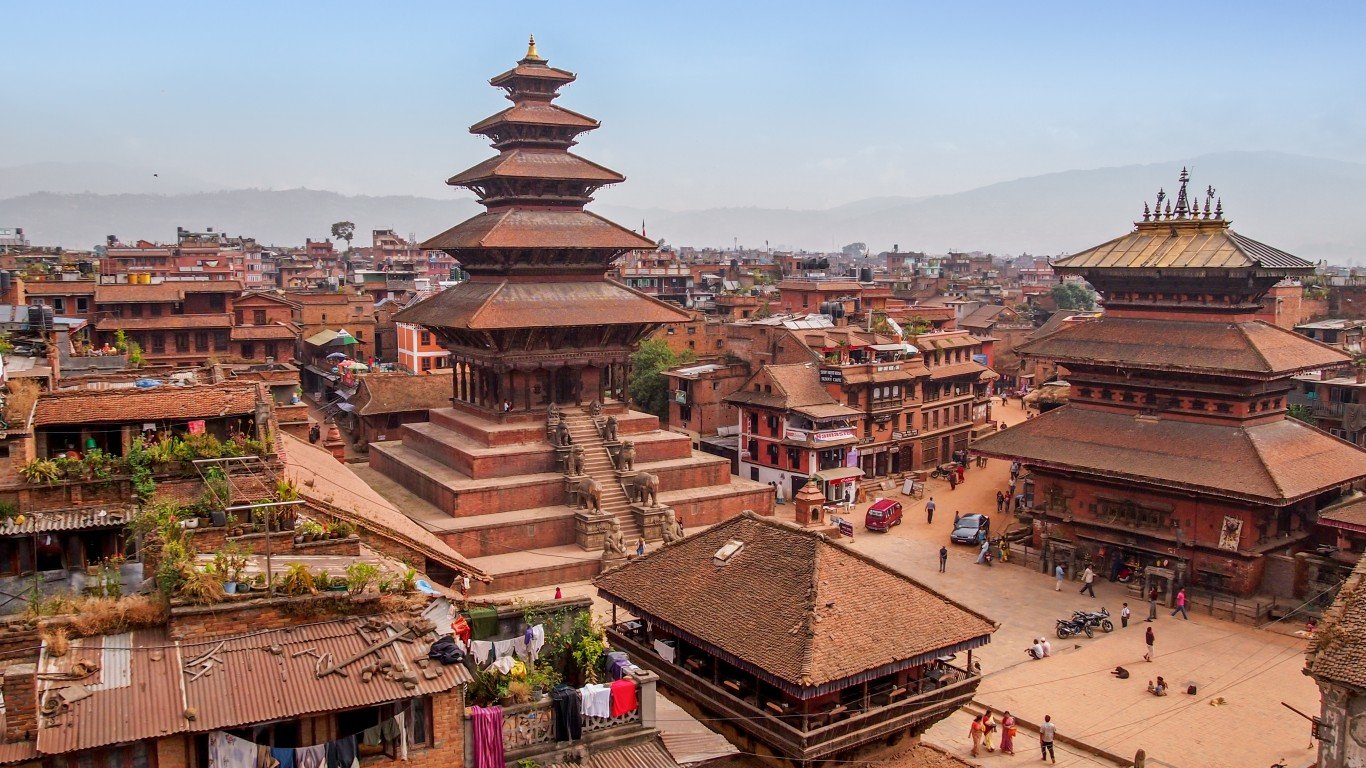
10. Nepal
> PM2.5 concentration: 46.0 μg/m³
> Total population 2020: 29,136,808
Air pollution is the second-highest risk factor (behind malnutrition) of death and disability in Nepal, according to the U.S. Agency for International Development. The capital of Kathmandu is situated on a high plateau ringed by mountains, ideal conditions for thermal inversions, where warmer air higher up acts like a lid that keeps cooler air (and air pollution) closer to ground level inside this topographic bowl.
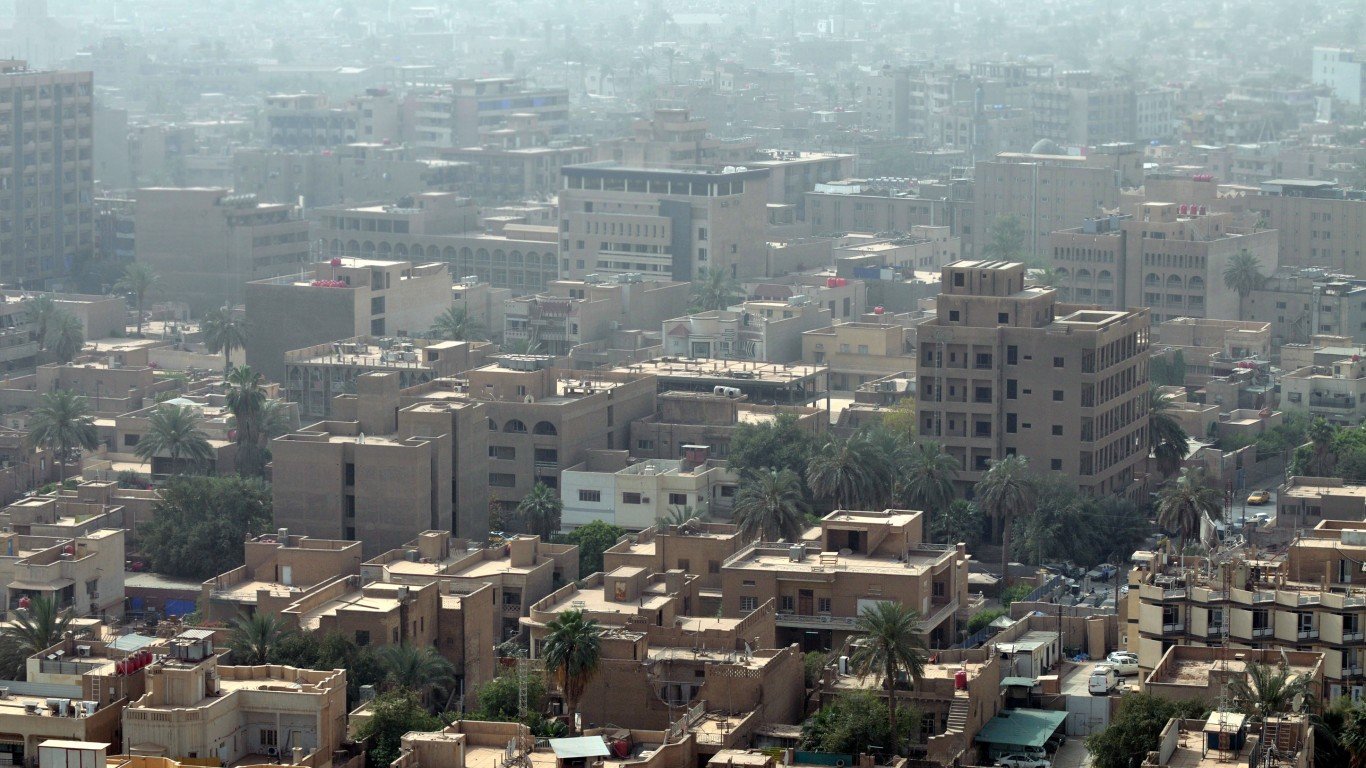
9. Iraq
> PM2.5 concentration: 49.7 μg/m³
> Total population 2020: 40,222,503
Iraq’s poor air quality is caused primarily by vehicle emissions, gas-powered generators due to lack of cleaner electrical infrastructure, and oil and gas industry emissions. Like other desert countries in the region, seasonal winds send massive amounts of sand and dust into the air during parts of the year.
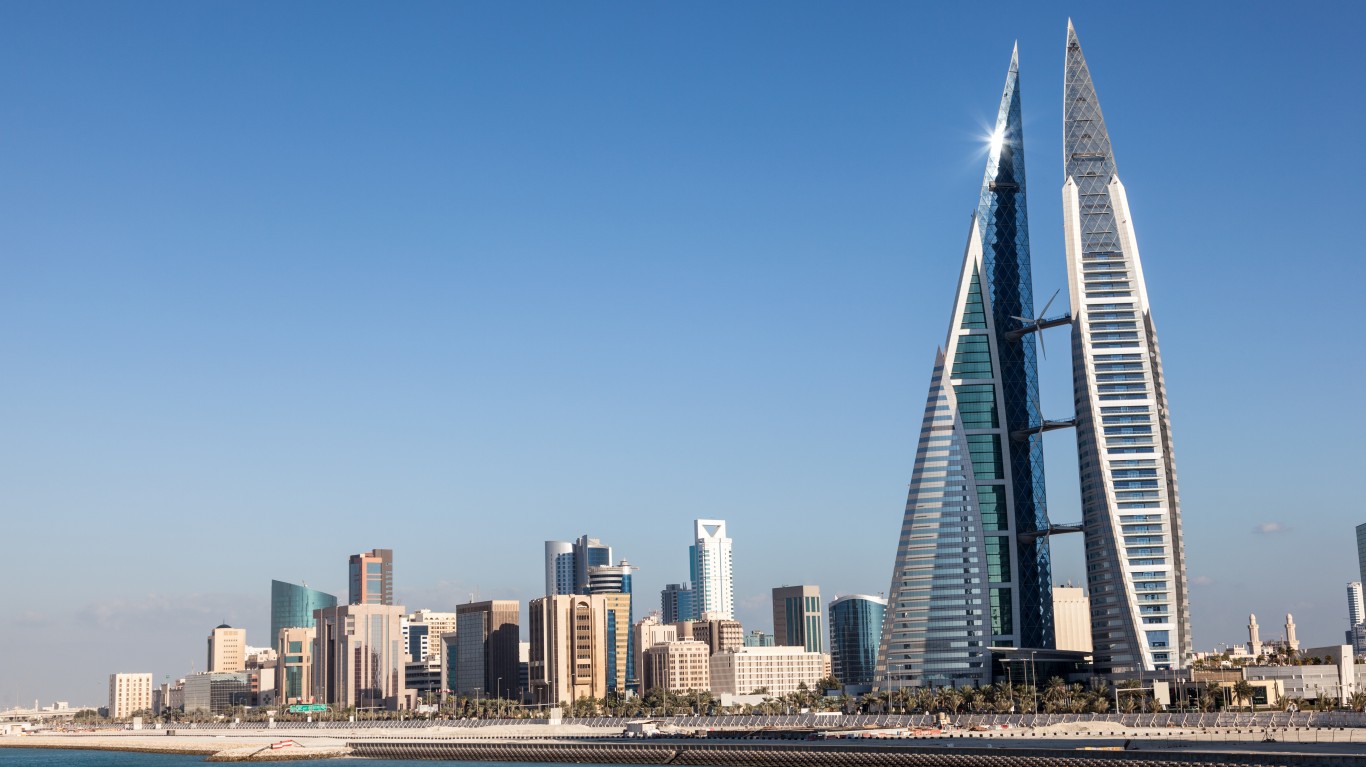
8. Bahrain
> PM2.5 concentration: 49.8 μg/m³
> Total population 2020: 1,701,583
Bahrain has the second-worst air quality of the eight Middle Eastern countries on this list. Oil and natural gas and fertilizer industries contribute to the poor air quality of this island country in the Persian Gulf, as do nearby Saudi Arabian petroleum activities. Seasonal high winds also kick up sand and dust in Bahrain and across the region.
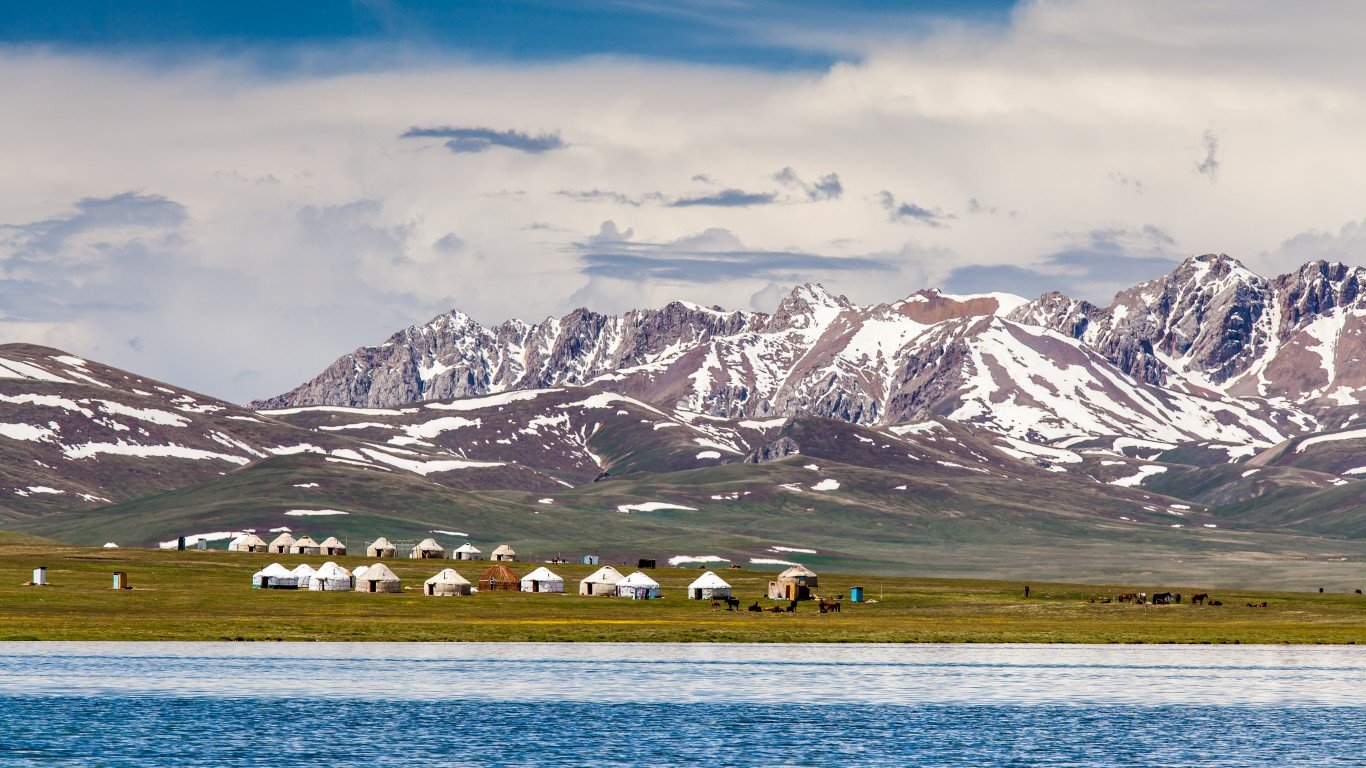
7. Kyrgyz Republic
> PM2.5 concentration: 50.8 μg/m³
> Total population 2020: 6,591,600
Kyrgyzstan is one of four Central Asian countries with the world’s poorest air quality. Thick smog is a common feature in the capital city of Bishkek, which recorded the world’s highest level of air pollution for several days in the winter of 2021 thanks to widespread burning of coal and wood for domestic heating and cooking.
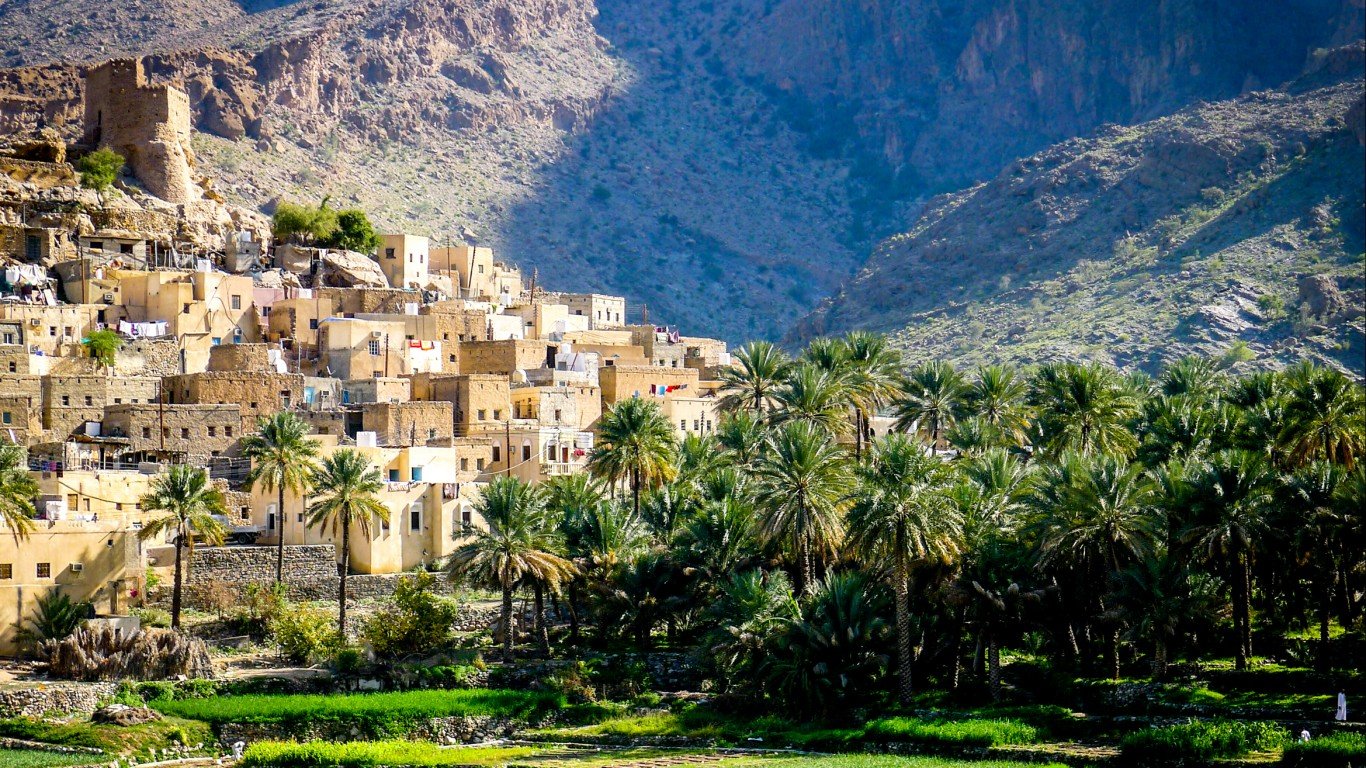
6. Oman
> PM2.5 concentration: 53.9 μg/m³
> Total population 2020: 5,106,622
Though Oman’s oil and gas industry is not as large as its Gulf neighbors, there is enough crude production and refining activity to contribute significantly to air pollution in this sultanate situated at the horn of the Arabian Peninsula. Oman registered the worst air quality in the Middle East in 2021, partly due to its proximity to one of the world’s narrowest and busiest shipping channels.






